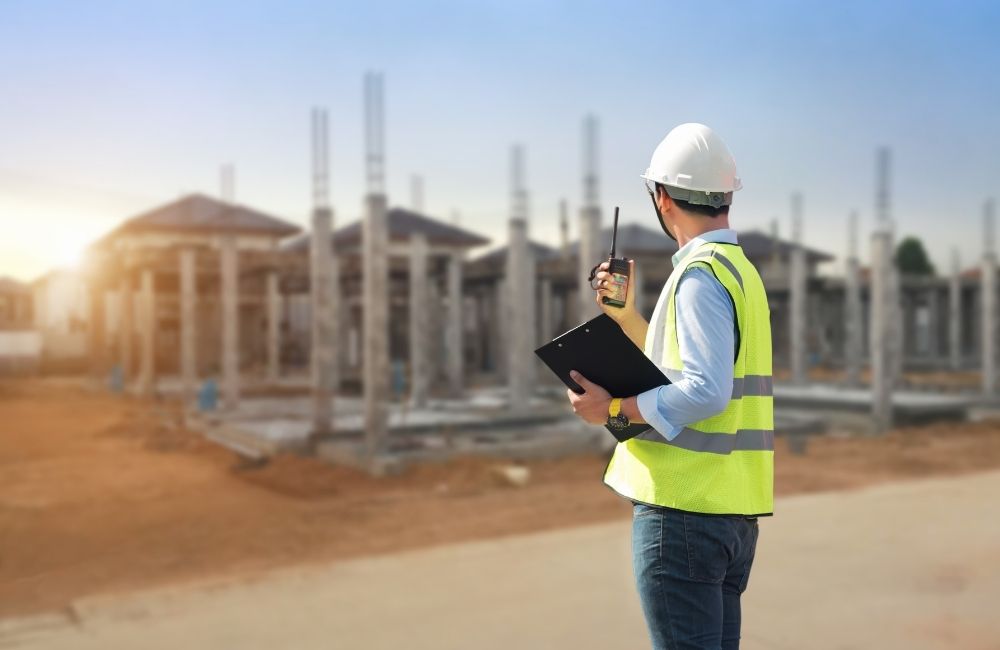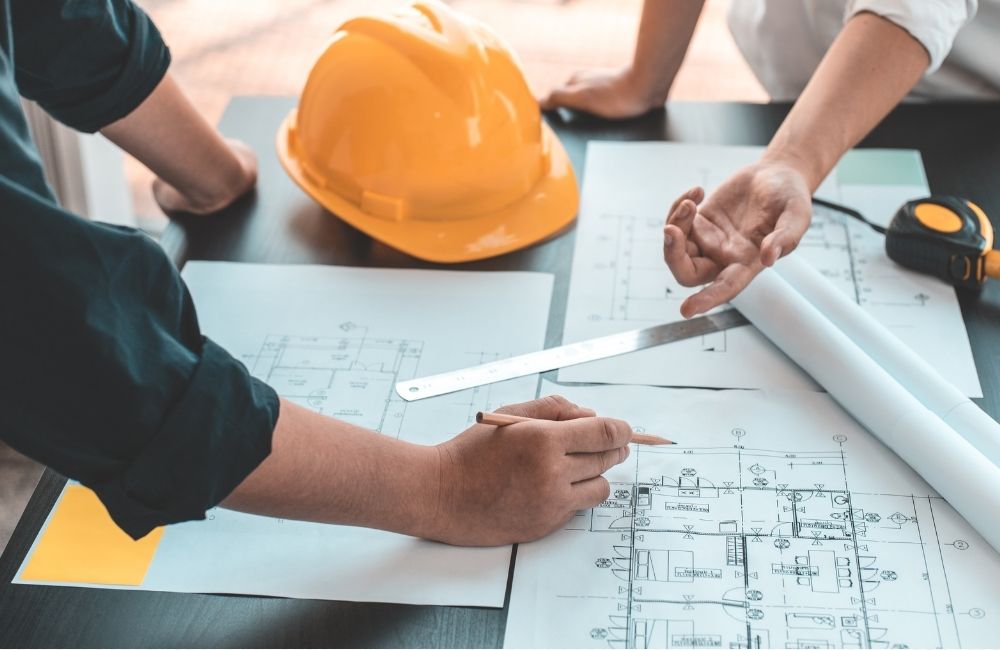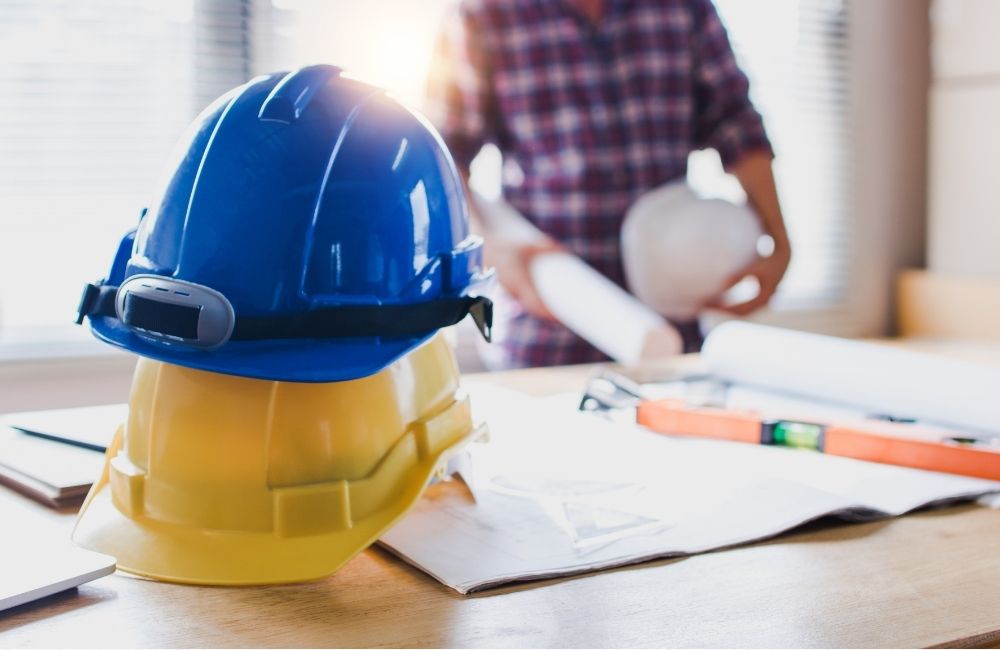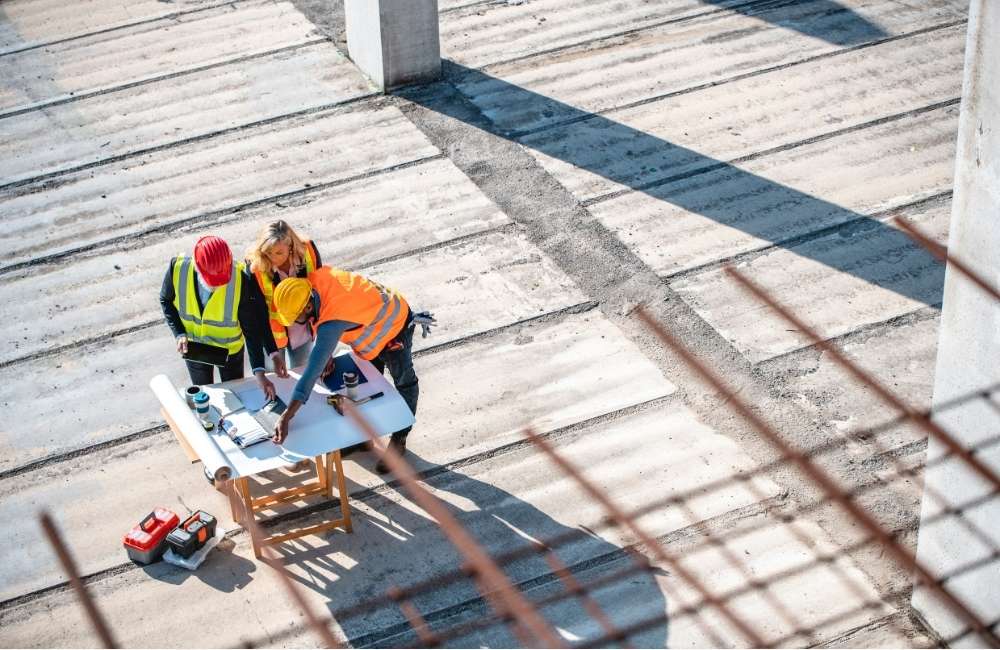Table of Contents
Key Takeaways
What is a Safety Helmet?
What is a Hard Hat?
Why Did OSHA Make the Switch?
7 Key Benefits of Wearing Construction Helmets at Work
- 1. Protection from Falling Objects
- 2. Head Injury Prevention
- 3. Electrical Hazard Protection
- 4. Compliance with Safety Regulations
- 5. Improved Visibility
- 6. Weather Protection
- 7. Identification of Roles
7 Considerations When Selecting Head Protection
Frequently Asked Questions
Prioritize Safety with Industry-Leading Expertise!
Key Takeaways✔ Helmets protect workers from falling objects. ✔ They reduce the risk of head injuries. ✔ They prevent electrical shocks and burns. ✔ Helmets ensure compliance with safety regulations. ✔ High-visibility helmets increase worker visibility. ✔ They provide protection from harsh weather. ✔ Helmets help identify roles and responsibilities. |
Safety helmets, or "construction helmets," are critical safety tools in construction, industrial, and other hazardous work environments. These helmets serve as the first line of defense against injuries and potential life-threatening accidents, providing workers with essential protection from a range of hazards present on job sites. Given the variety of risks inherent in these settings, the use of construction helmets is not only a matter of personal safety but also a regulatory requirement in many industries.
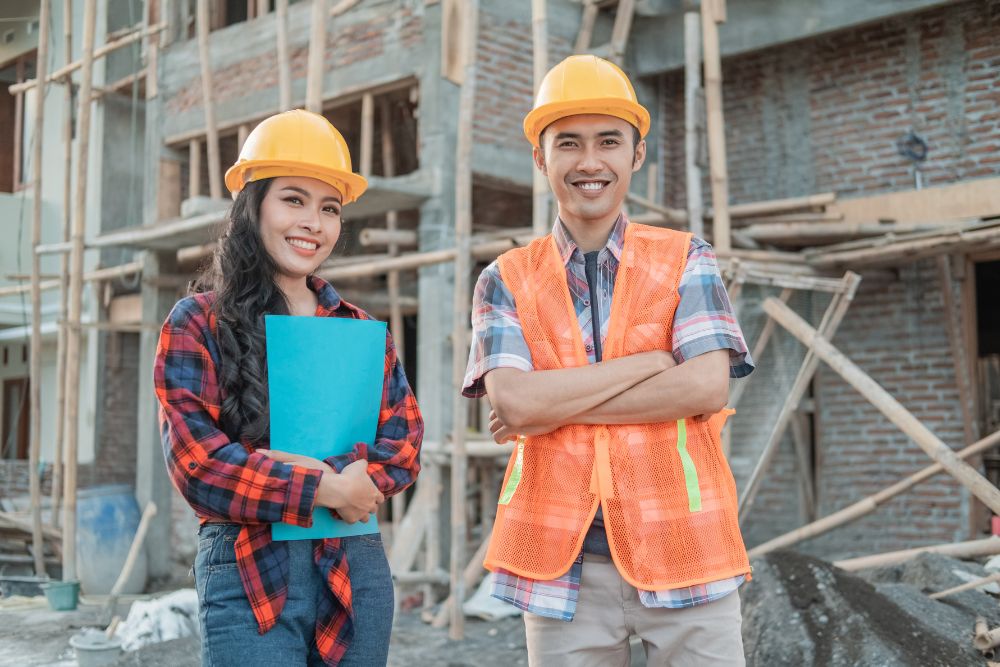
What is a Safety Helmet?
A safety helmet is a modern alternative to the traditional hard hat, designed to offer enhanced protection and additional features for workers in high-risk environments. Unlike hard hats, which focus primarily on top-of-head protection, safety helmets provide coverage from impacts to both the top and sides of the head. They also often include chin straps, preventing the helmet from dislodging in the event of a fall or accident.
Safety helmets are becoming more popular on job sites due to their compatibility with a wide range of accessories, such as visors, face shields, and hearing protection. The streamlined design and increased stability also make them a practical choice for workers needing extra protection in dynamic work environments.
What is a Hard Hat?
A hard hat is a protective helmet traditionally used in construction and industrial environments to safeguard workers from head injuries. Designed to absorb the impact of falling objects, debris, and other hazards, hard hats have been an industry standard for over 100 years. They are typically made from durable materials like high-density polyethylene (HDPE) and feature a suspension system that distributes the force of an impact. While hard hats provide reliable protection, they can also be customized with various accessories such as face shields, visors, and earmuffs, making them versatile for different job site needs.
However, traditional hard hats have some limitations, such as lacking side impact protection and chin straps, which can lead to them dislodging during accidents. As safety helmets with advanced features gain popularity, hard hats remain a more basic and cost-effective choice for many industries, especially where fewer hazards are present.
Why Did OSHA Make the Switch?
OSHA made the shift from traditional hard hats to modern safety helmets to enhance worker protection and address evolving safety needs on job sites. With electrocutions and head injuries accounting for a significant number of work-related incidents, OSHA recognized the limitations of hard hats, particularly their lack of side-impact protection and tendency to fall off without chin straps.
Safety helmets offer improved head coverage, secure fit with chin straps, and compatibility with modern safety accessories like face shields, goggles, and communication systems. This shift reflects advancements in helmet design and materials, helping OSHA keep up with evolving safety needs on job sites.
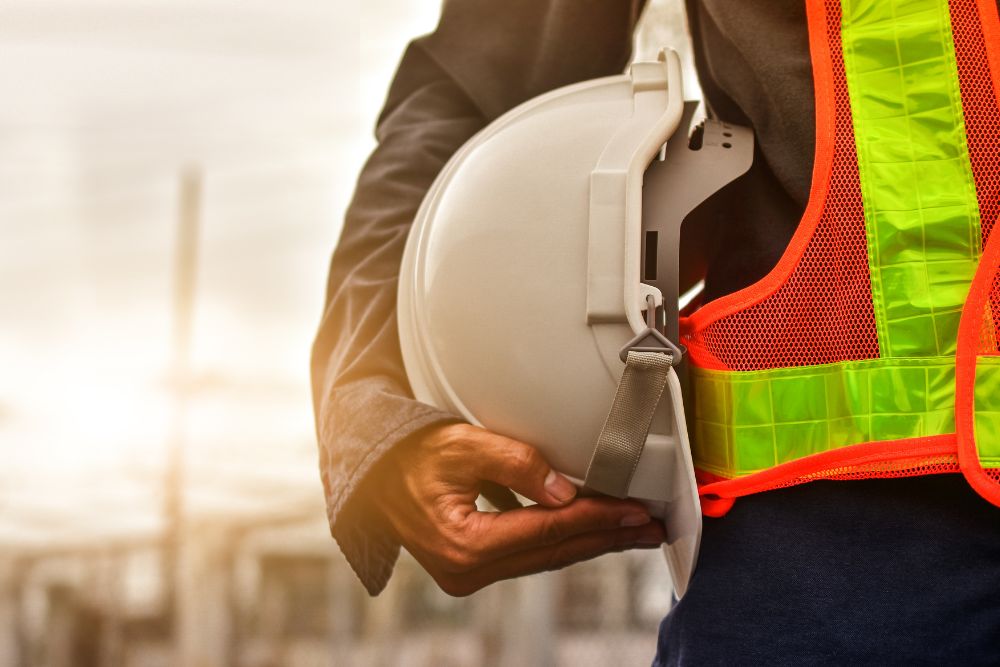
7 Key Benefits of Wearing Construction Helmets at Work
1. Protection from Falling Objects
Construction sites are often bustling with activity, with workers performing tasks at different heights and levels. One of the most common hazards on such sites is the risk of falling objects. Whether it's tools, debris, or building materials, the chances of an object falling from a height are significant.
Key Benefits of Protection from Falling Objects
- Shock Absorption: The primary function of construction helmets is to reduce the impact of falling objects by absorbing the shock before it reaches the skull.
- Prevention of Penetration: High-quality helmets are also equipped to withstand penetration from sharp or heavy objects, keeping the worker’s head safe.
- Reduced Downtime: With workers wearing construction helmets, the likelihood of severe injury is minimized, reducing downtime caused by accidents and keeping projects on track.
2. Head Injury Prevention
Construction helmets provide crucial protection against various forms of head injuries. According to data from the U.S. Bureau of Labor Statistics, head injuries accounted for approximately 6% of non-fatal occupational injuries that resulted in days away from work in 2020. Of these injuries, nearly half occurred when workers came into contact with equipment or objects, while around 20% were caused by slips, trips, or falls. This highlights the importance of wearing construction helmets in preventing not only injury but also the financial and operational repercussions associated with worker downtime.
Types of Head Injury
- Traumatic Brain Injury (TBI): Caused by severe impact, leading to cognitive or physical impairments. Often results from being struck by heavy objects or machinery.
- Concussions: Mild form of TBI, typically from falls or blows to the head. Symptoms include dizziness, confusion, and headaches.
- Skull Fractures: Breaks in the skull due to strong impacts, often from falls or being hit by objects.
- Scalp Lacerations: Cuts to the scalp caused by sharp debris or tools, leading to blood loss and risk of infection.
- Concussions: Bruising of the brain tissue from direct impact, often from falls or being struck by objects.
- Hematomas: Blood collection outside vessels, occurring after blows to the head, potentially causing swelling or bleeding in the brain.
3. Electrical Hazard Protection
In environments where workers face electrical risks, such as construction sites involving electrical installations or repairs, specific construction helmets are designed to insulate against electrical currents. These helmets protect workers from potential electrical shocks that may occur if they come into contact with live wires or other electrical hazards. With electrocutions accounting for 7.2% of work-related deaths in construction, the use of proper head protection is crucial for reducing this risk.
Key Features of Electrical Hazard Protection
- Non-conductive Materials: Construction helmets made from non-conductive materials prevent the transfer of electricity, protecting workers from shocks and burns.
- Class Ratings: Helmets are classified based on the level of protection they offer against electrical hazards, ensuring that the right level of protection is used for each specific job.
- Class G (General): Protects against low-voltage electrical hazards up to 2,200 volts, suitable for moderate-risk environments.
- Class E (Electrical): Provides high-voltage protection up to 20,000 volts, ideal for workers in high-voltage areas like electrical line work.
4. Compliance with Safety Regulations
Adherence to safety standards and regulations is mandatory in many industries, particularly construction, manufacturing, and energy. Regulatory bodies, such as the Occupational Safety and Health Administration (OSHA), set stringent guidelines that require the use of construction helmets on job sites. OSHA’s regulations ensure that workers are equipped with appropriate safety gear to minimize the risk of injury, and employers are responsible for enforcing these rules.
- Type I head protection is designed to shield against impacts to the top of the head.
- Type II head protection provides coverage against impacts to both the top and sides of the head.
5. Improved Visibility
Visibility on a job site can be a significant factor in preventing accidents. Workers operating heavy machinery or navigating crowded environments need to be clearly visible to others to reduce the risk of injury. Construction helmets, which are often designed in bright, highly visible colors, make it easier for workers to be seen from a distance, particularly in low-light conditions or during adverse weather.
Benefits of High-Visibility Helmets
- Accident Prevention: High-visibility helmets make workers easily identifiable, reducing the risk of collisions or mishaps.
- Night Work Safety: Helmets with reflective strips or bright colors are especially important for night shifts or work in dimly lit environments.
6. Weather Protection
Construction workers often face exposure to harsh environmental conditions, from extreme heat to freezing cold or heavy rainfall. Construction helmets provide protection not just from physical hazards but also from the elements.
Weather Protection Features
- UV Protection: Some helmets are designed with materials that block harmful UV rays, protecting workers from sunburn or heatstroke.
- Water Resistance: Helmets with water-resistant properties keep workers dry and maintain their comfort even during rainy conditions.
- Insulation: For colder environments, helmets may come with insulated linings to keep workers warm, allowing them to focus on the task at hand.
7. Identification of Roles
Construction helmets can also serve as a visual tool for identifying the roles and responsibilities of workers on a job site. Different colors or markings on helmets can be used to distinguish between supervisors, electricians, engineers, and other specialized workers, making it easier to coordinate tasks and ensure that the right person is called upon for specific duties.
Common Helmet Colors and Their Roles
- White: Worn by supervisors, managers, engineers, and foremen.
- Yellow: Typically used by general laborers and earth-moving operators.
- Blue: Commonly assigned to technical workers, such as electricians and carpenters.
- Green: Often designated for safety officers or new workers (trainees).
- Red: Usually worn by fire marshals or safety personnel.
- Orange: Worn by road crews or heavy machinery operators for high visibility.
- Brown: Reserved for welders or those working in high-heat environments.
- Gray: Often used by visitors to job sites.
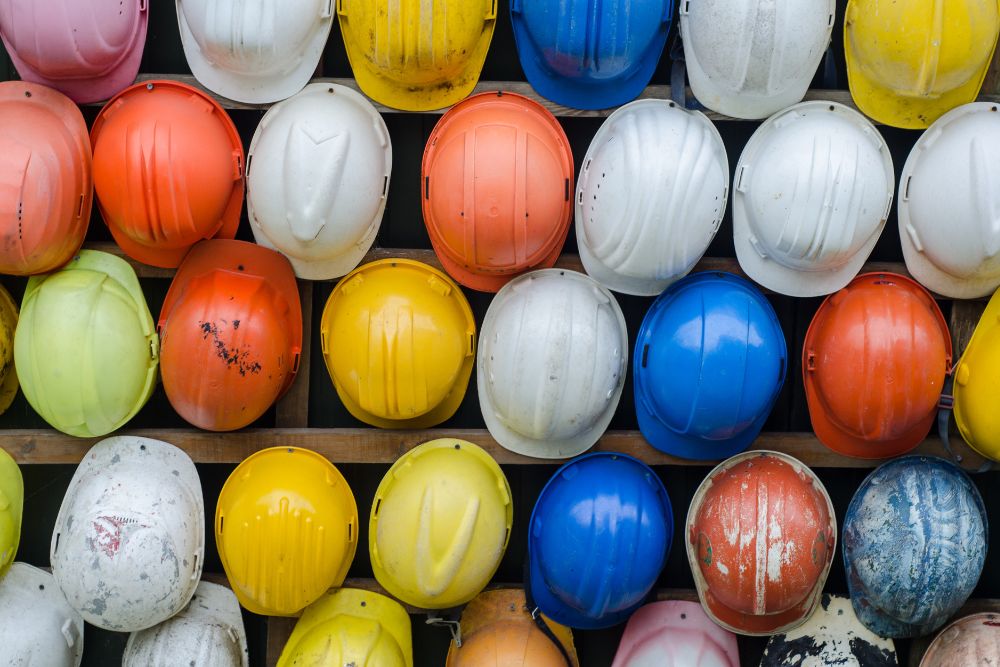
7 Considerations When Selecting Head Protection
Selecting the right construction helmet for a job site is critical to ensuring the safety and well-being of workers. Various factors must be considered depending on the type of work, environment, and specific hazards. Here are key considerations for different industries and work conditions:
1. Construction Sites
For construction sites with high risks of falling objects, debris, impacts from equipment, awkward working positions, or slip, trip, and fall hazards, Type II head protection is recommended. Helmets should include chin straps to ensure the helmet remains securely on the worker's head in the event of a fall or awkward movement.
2. Oil and Gas Industry
In the oil and gas industry, workers are often exposed to multiple hazards, including severe impacts and chemical exposure. Type II helmets with integrated eye and face protection (such as face shields and goggles) are advised to provide comprehensive protection from both physical and chemical hazards.
3. Working from Heights
For tasks involving heights, the risk of helmets falling off can be significant. Helmets with chin straps are essential to ensure that the head protection stays securely in place during work at height.
4. Electrical Work
Vented helmets should be avoided for electrical work, as they compromise protection against electrical hazards.
5. High and Low-Temperature Environments
For environments with high temperatures or exposure to molten materials, helmets marked “HT” are recommended. These helmets are designed with advanced heat-resistant properties. For cold environments, select helmets marked “LT”, which are tested and preconditioned for low temperatures to provide adequate protection in freezing conditions.
6. High Visibility
In settings where workers need to be easily seen, such as road construction or low-light environments, high-visibility (HV) helmets are important. These helmets are marked with “HV” to ensure they meet the visibility requirements for such jobs.
7. Specialized Work Environments
In specialized environments where additional features like integrated face shields, hearing protection, or communication devices are necessary, employers should opt for helmets that are compatible with manufacturer-approved safety attachments.
Frequently Asked Questions
How often should construction helmets be replaced?
Most construction helmets have a recommended lifespan of around five years, though this can vary depending on the manufacturer and use conditions. Helmets should be replaced sooner if they show signs of damage like cracks or wear on the suspension system. Sunlight, chemicals, and extreme temperatures can also degrade materials, reducing their protective qualities. Regular inspections are essential to maintaining helmet integrity, and even without visible damage, helmets should not be used beyond their recommended lifespan.
Can construction helmets be worn backward?
Wearing construction helmets backward is not recommended unless the helmet is specifically designed for reverse wear. Some manufacturers make helmets adaptable for this, with reversible suspension systems. Wearing a helmet backward without this design can compromise protection, potentially reducing its ability to absorb impact effectively. Always check the manufacturer’s guidelines before considering reverse wear.
Can construction helmets be customized with logos or designs?
Many manufacturers allow customization of helmets with logos or designs, helping with worker identification and brand visibility. However, customization should not compromise the helmet’s protective qualities. Stickers or paints containing solvents can weaken helmet materials, reducing impact absorption. Always use manufacturer-approved methods for customization to ensure compliance with safety standards.
What materials are construction helmets made of?
Construction helmets are typically made from high-impact-resistant materials such as high-density polyethylene (HDPE), ABS plastic, or polycarbonate, chosen for their durability and lightweight properties. Some helmets are reinforced with fiberglass for extra strength. The suspension system is often made of nylon or polyester, while liners may include foam for additional comfort. These materials meet safety standards for impact resistance, puncture protection, and electrical insulation.
How should construction helmets be stored when not in use?
Helmets should be stored in a cool, dry place away from sunlight and heat, as UV rays can weaken the materials. They should be kept on a shelf or in a locker, away from anything that could crush or deform them. Avoid leaving helmets in vehicles, as high temperatures can damage the materials. Regular cleaning and proper storage will help maintain their protective qualities.
Prioritize Safety with Industry-Leading Expertise!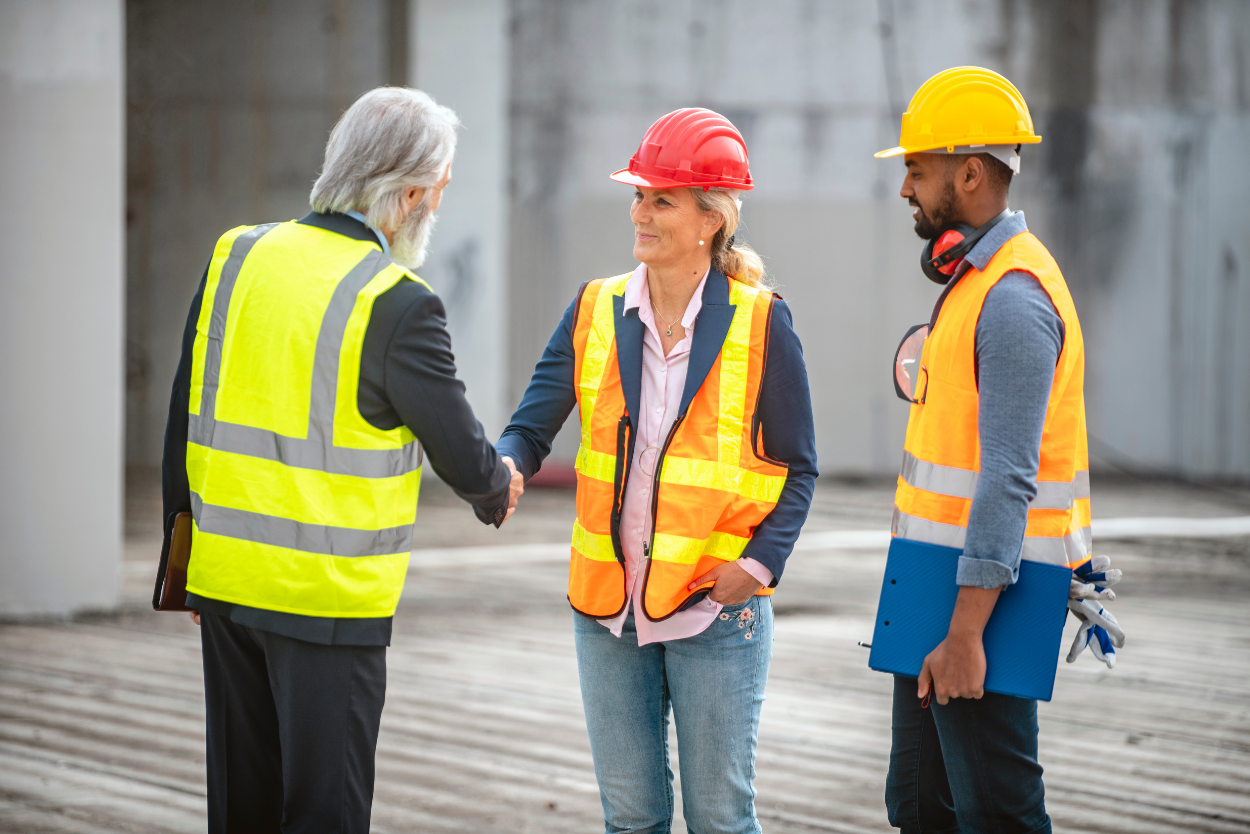
At Claris Design•Build, safety isn't just a talking point—it’s a commitment. With an outstanding Insurance Safety Modification rate of 0.87, one of the best in the industry, we ensure every project is completed with the highest safety standards. Trust our dedicated team to create secure, efficient work environments where safety is integrated into every step of the process. Let us help you build with confidence and peace of mind.



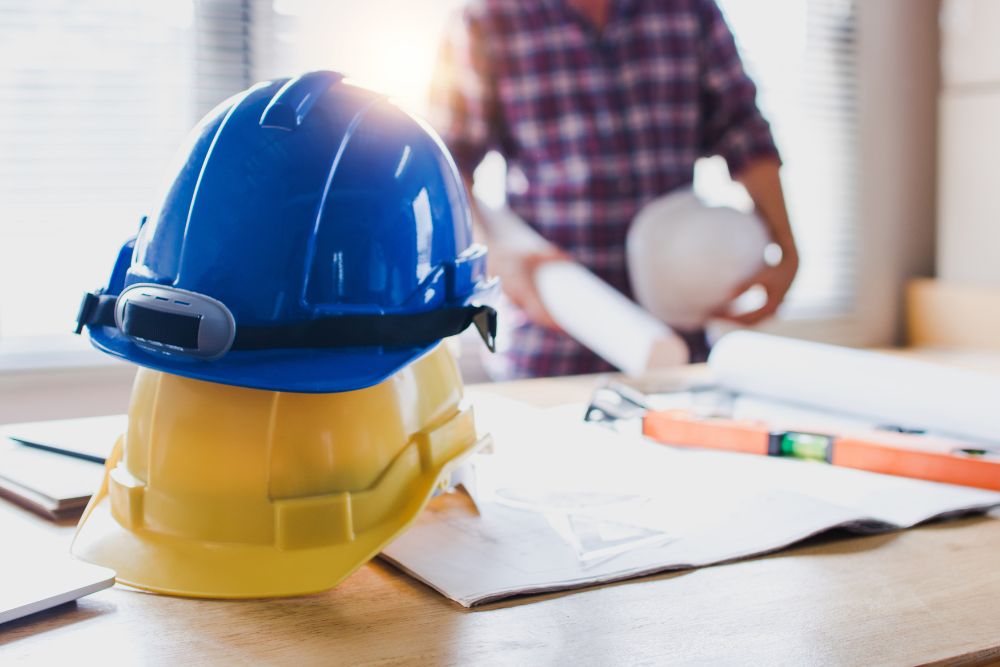
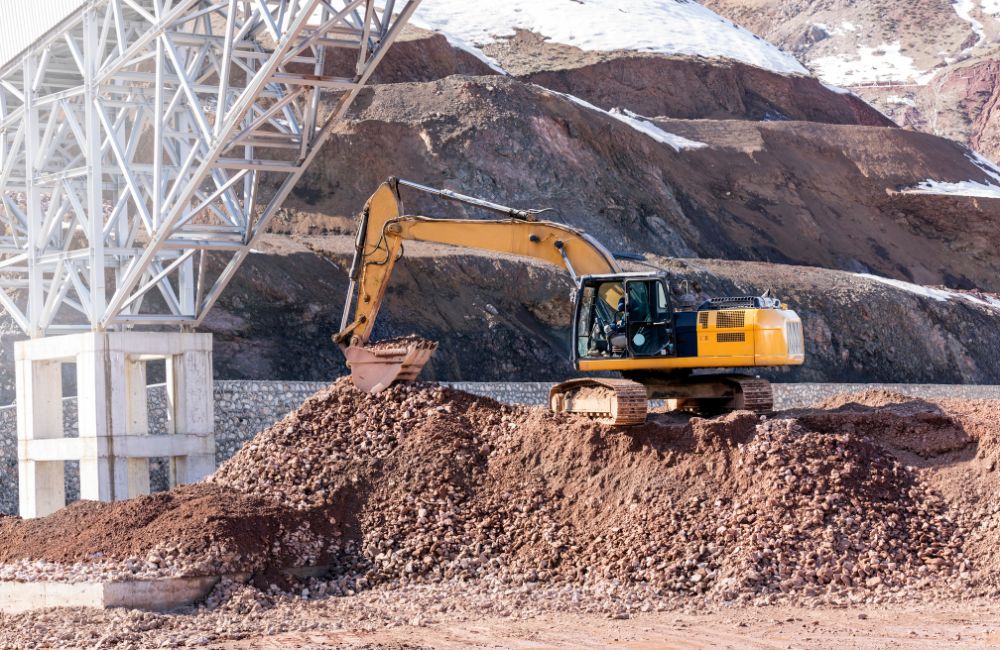
![[2025 UPDATE] Commercial Construction Cost per Square Foot in the US](https://www.clarisdesignbuild.com/wp-content/uploads/2025/04/2025-UPDATE-Commercial-Construction-Cost-per-Square-Foot-in-the-US-3.jpg)
